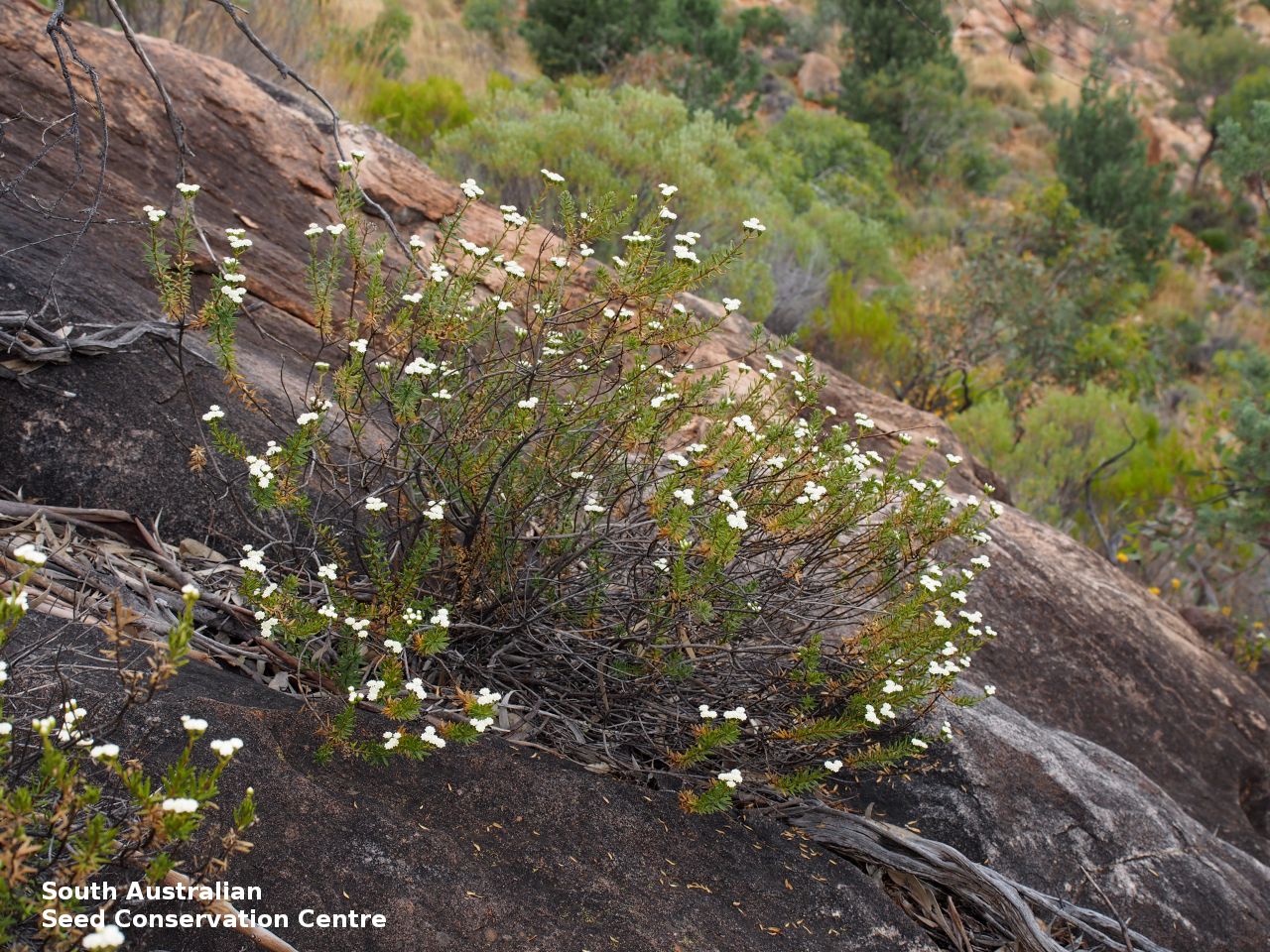
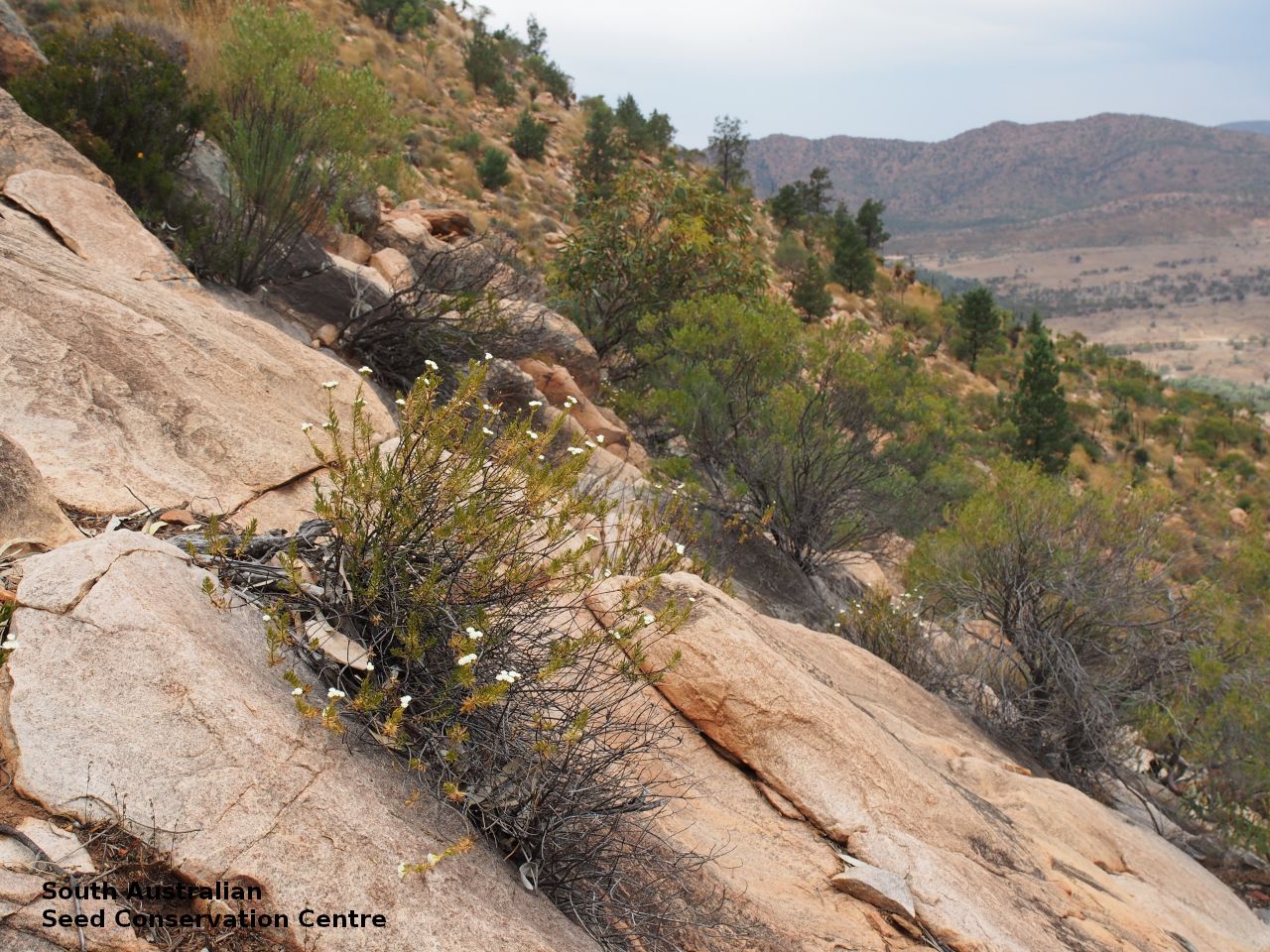
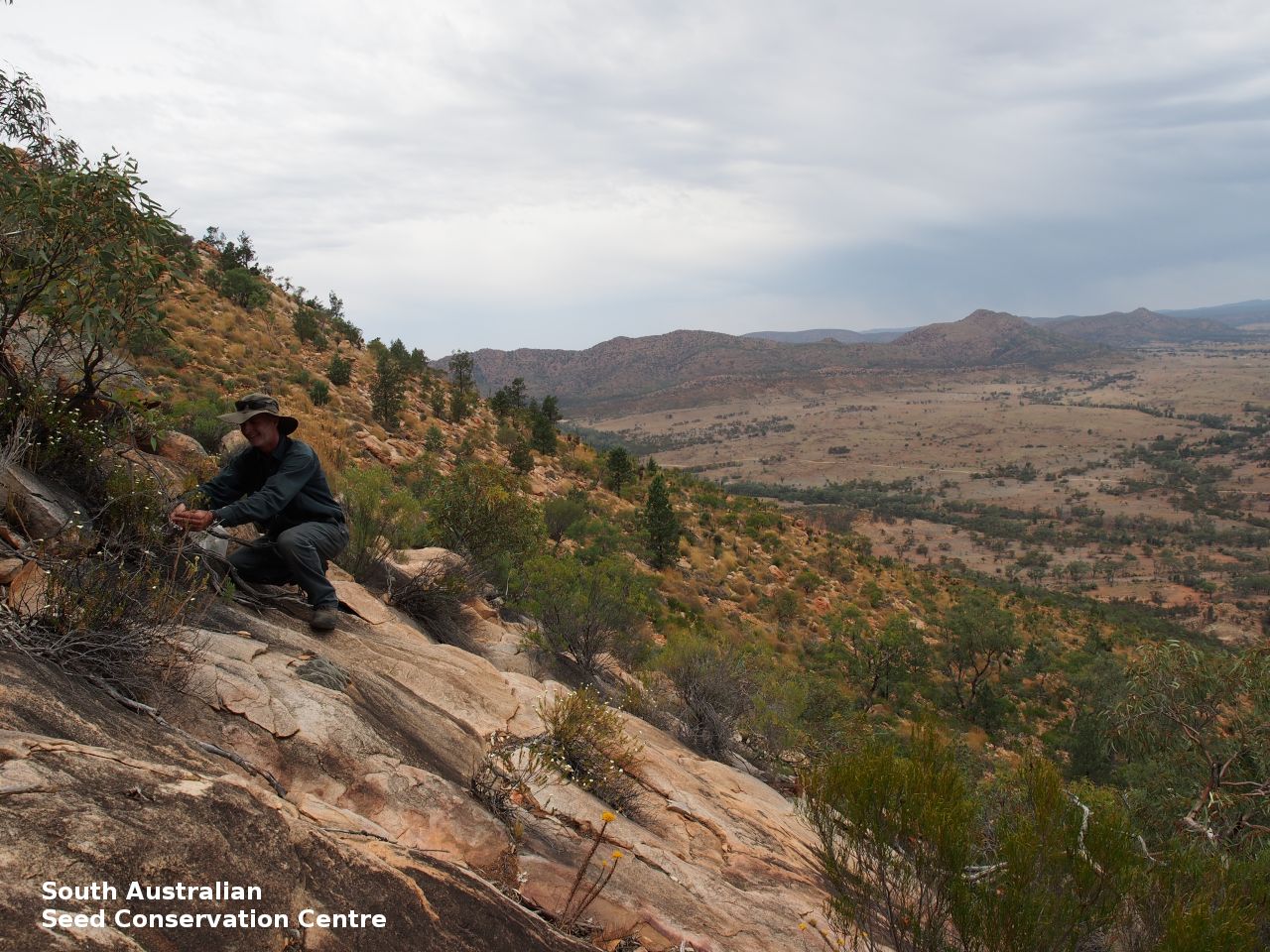
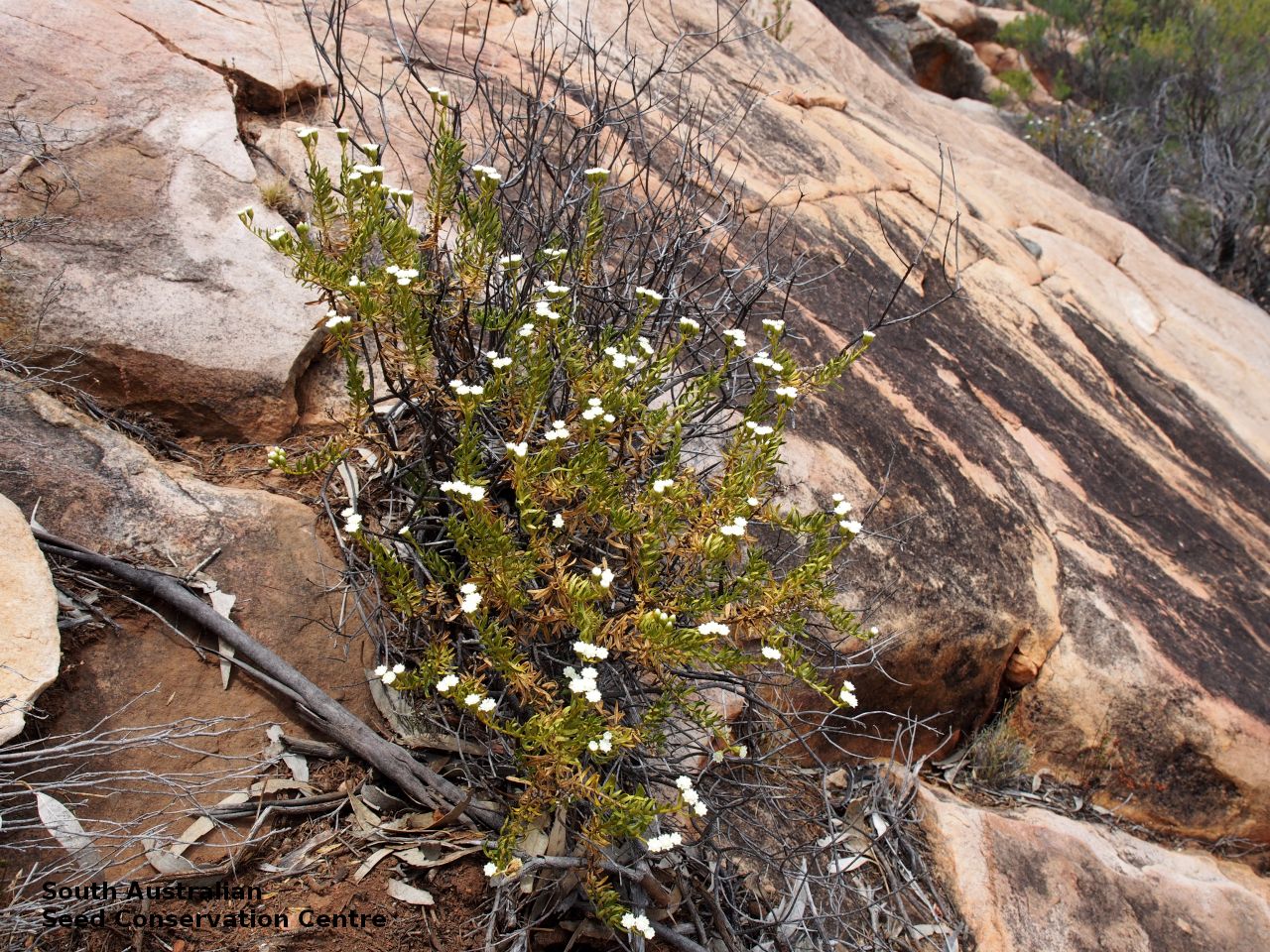
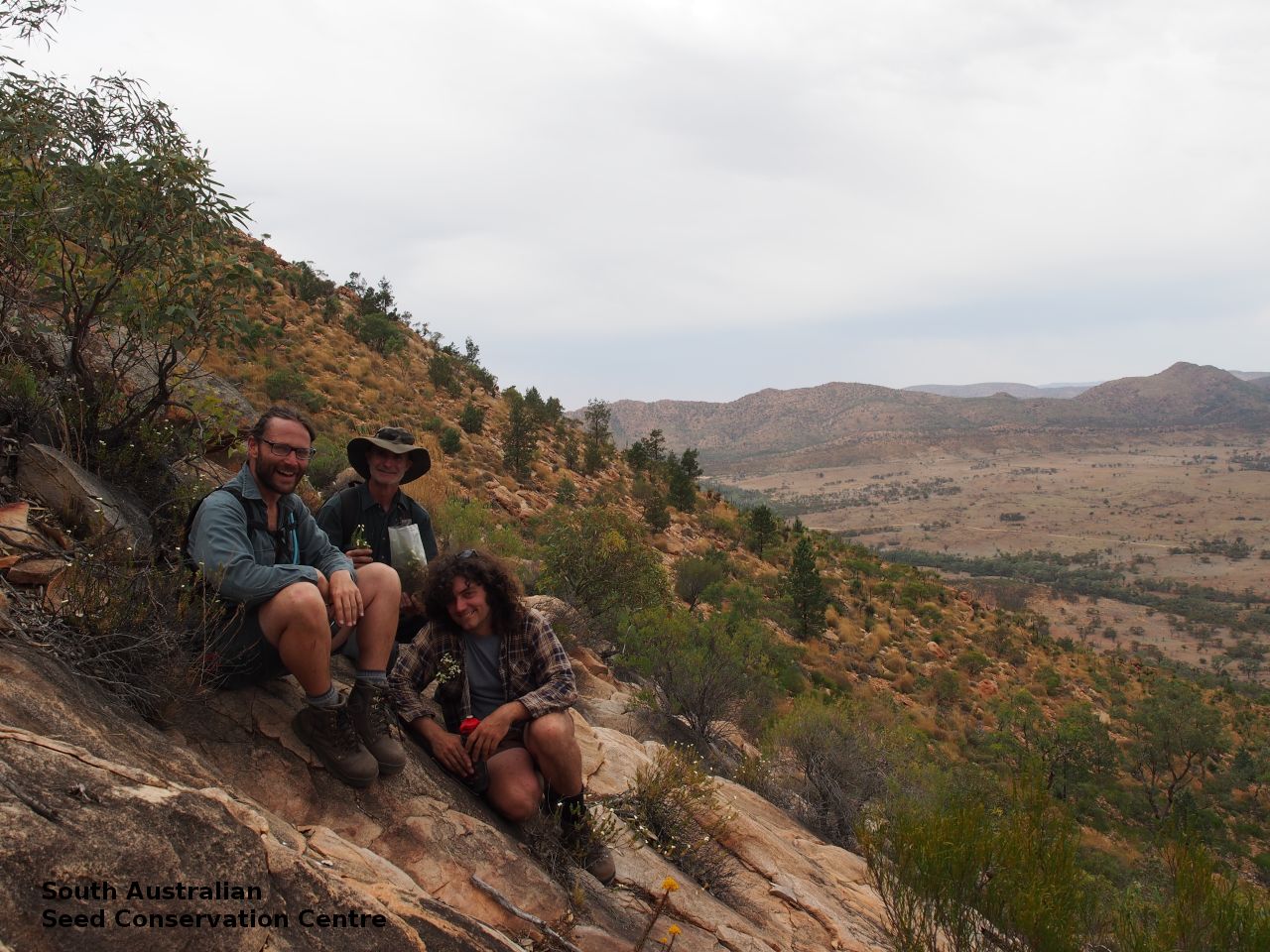
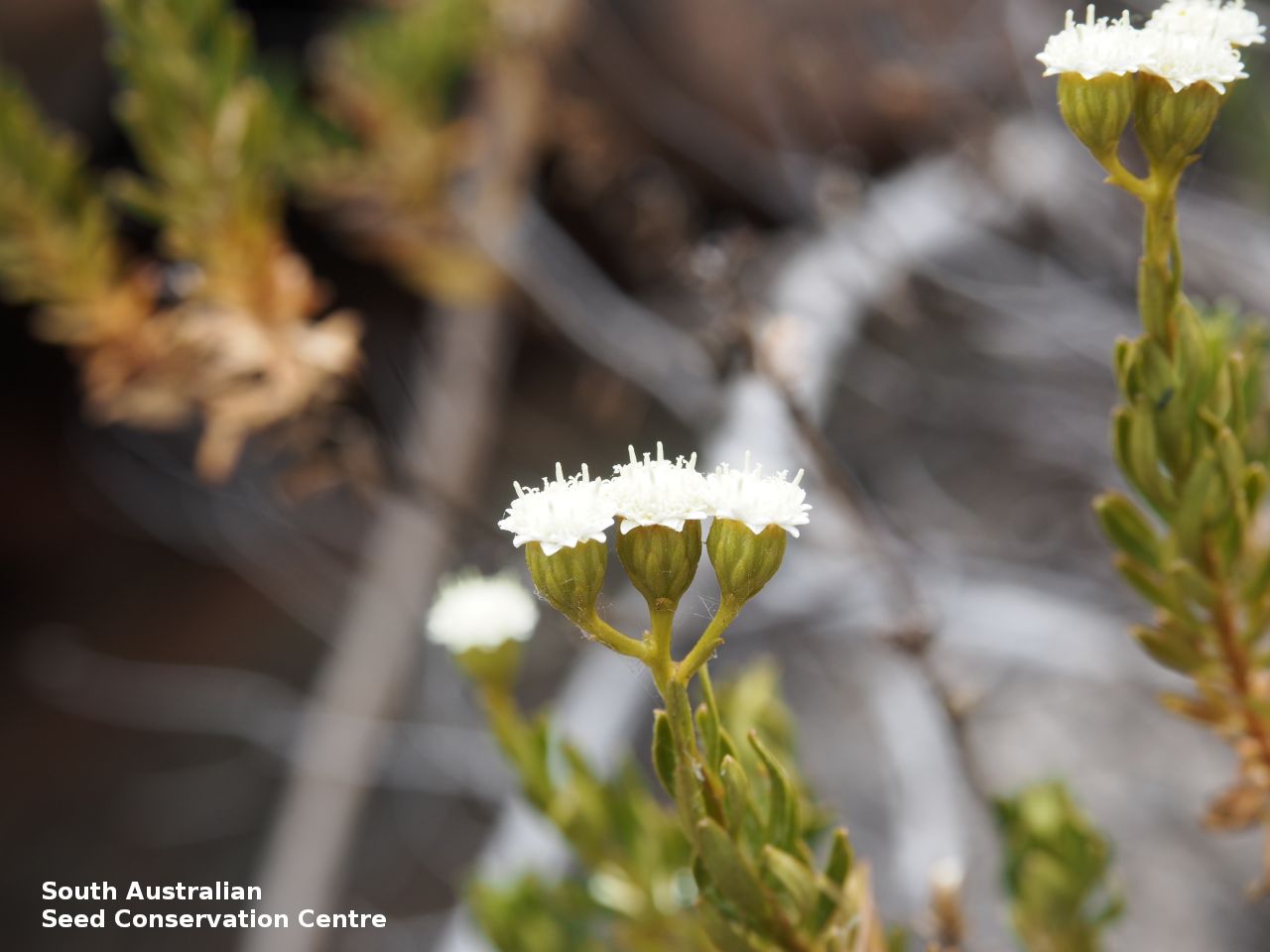
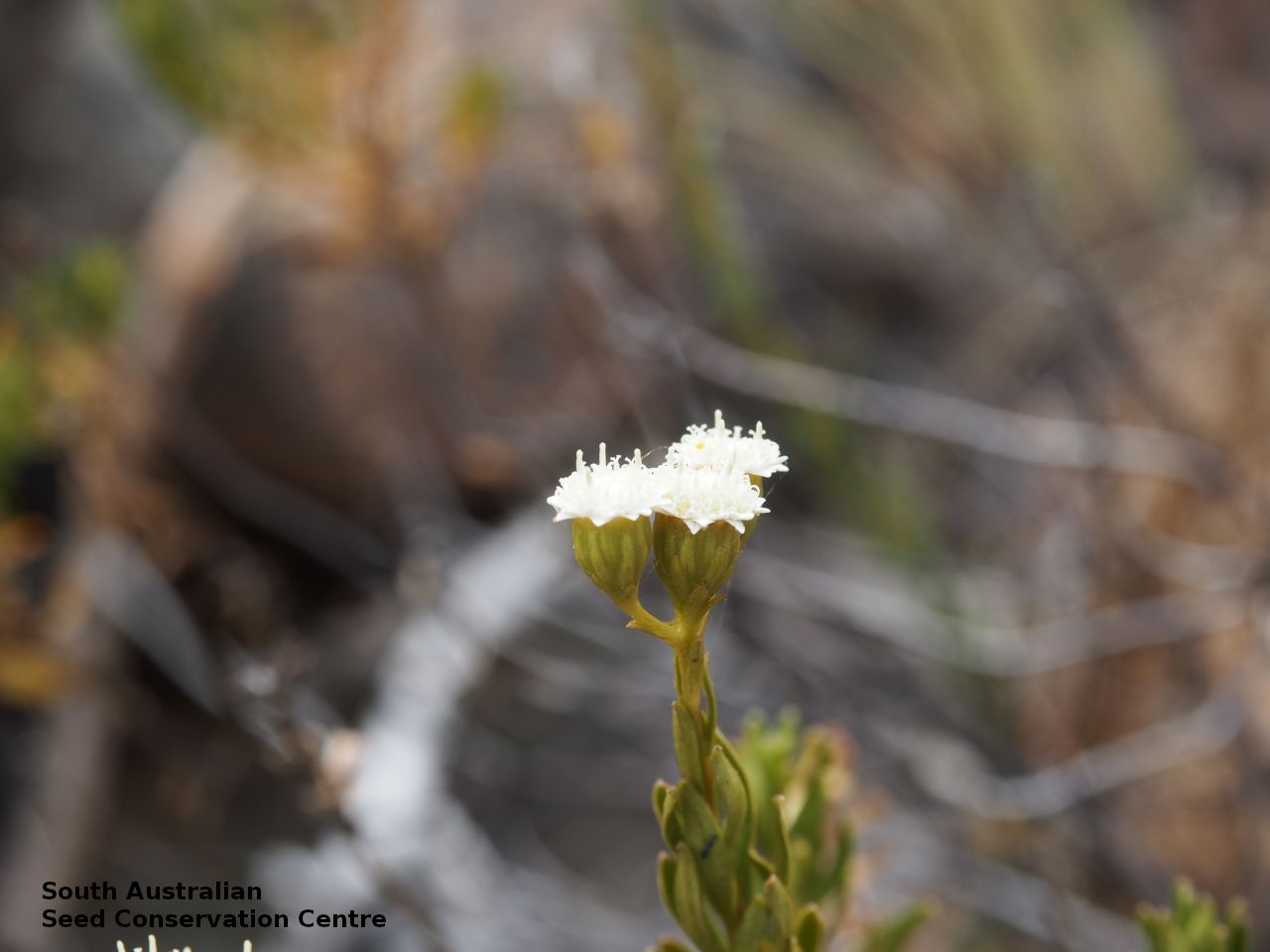
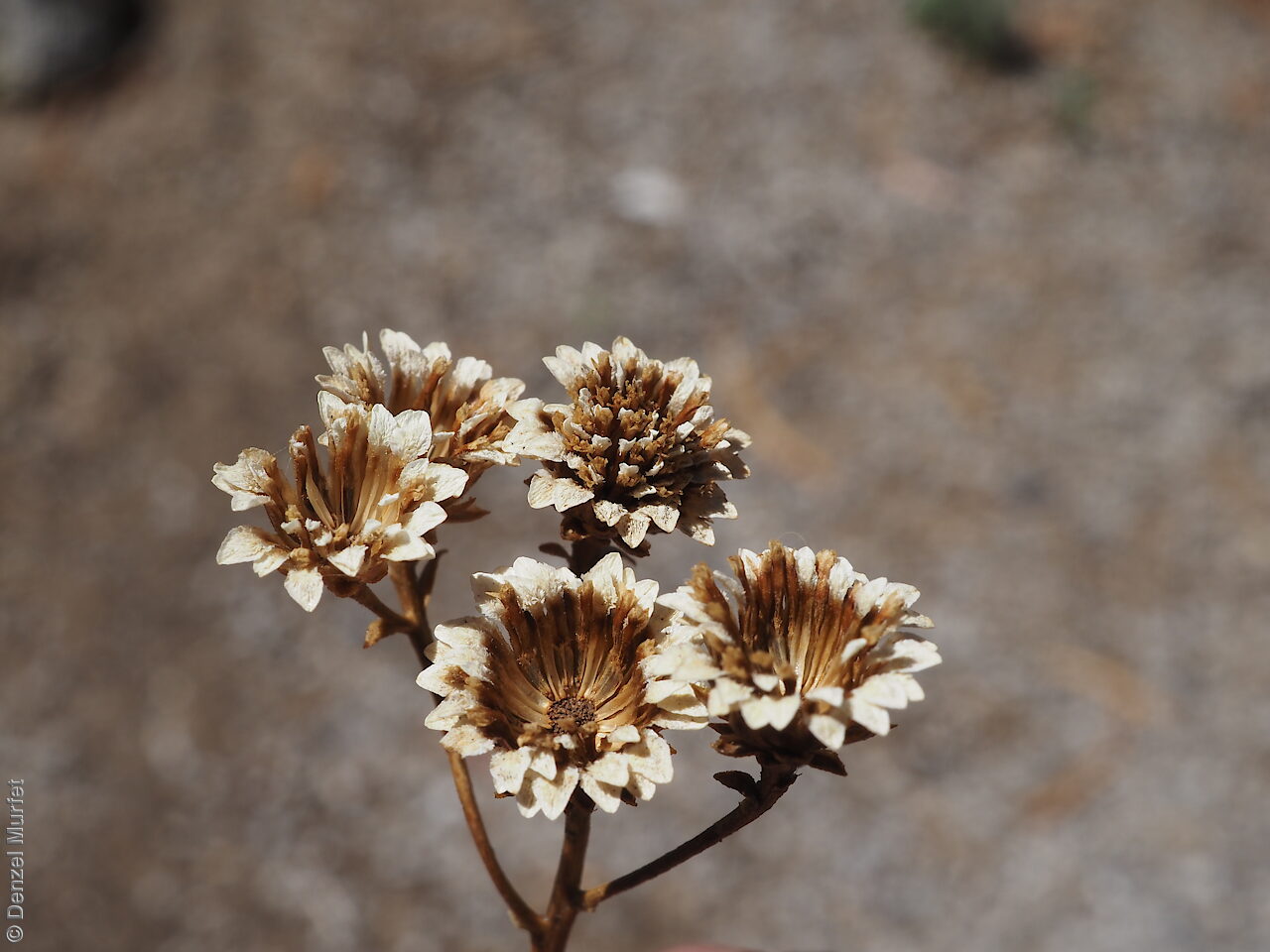
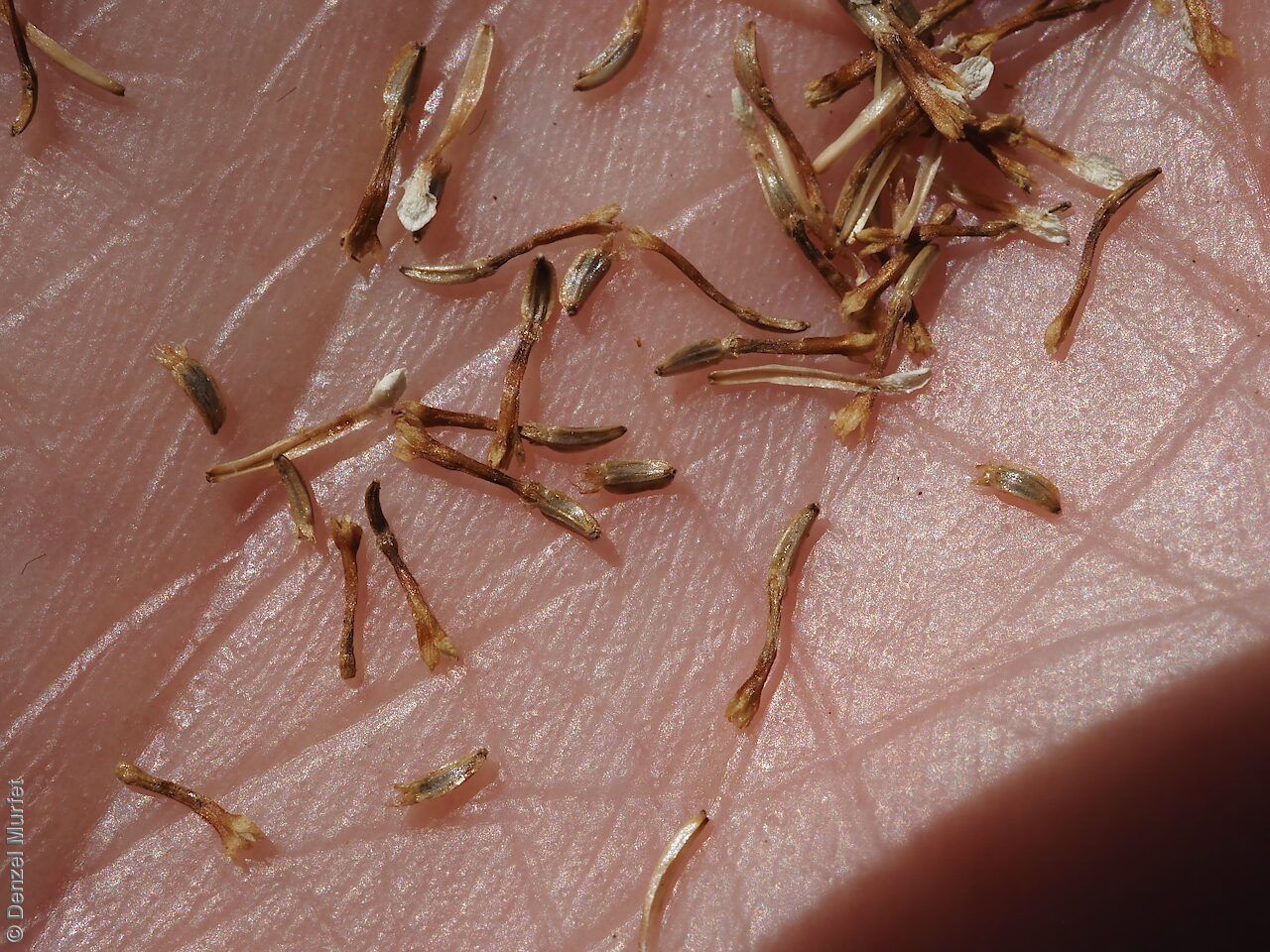
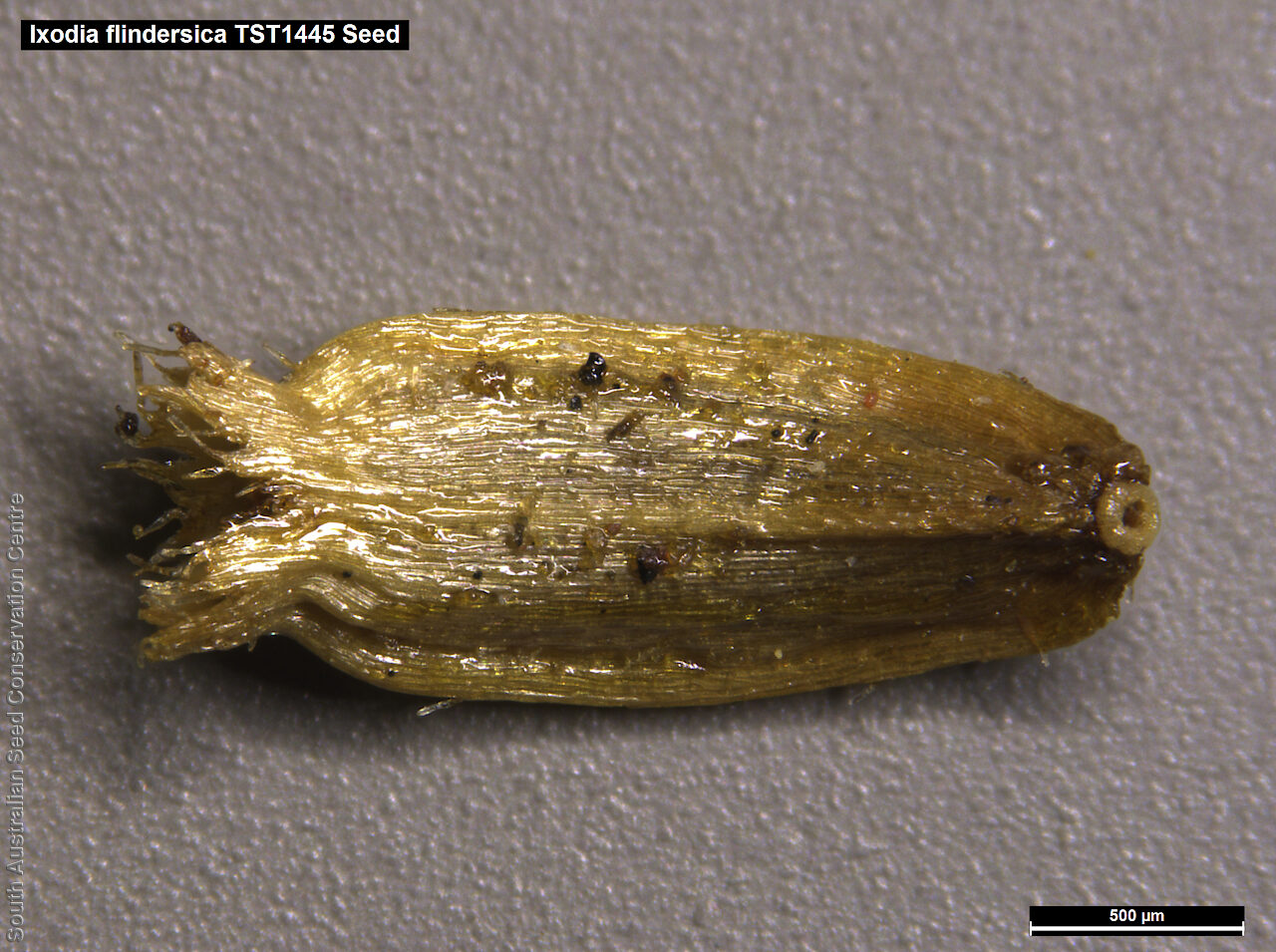
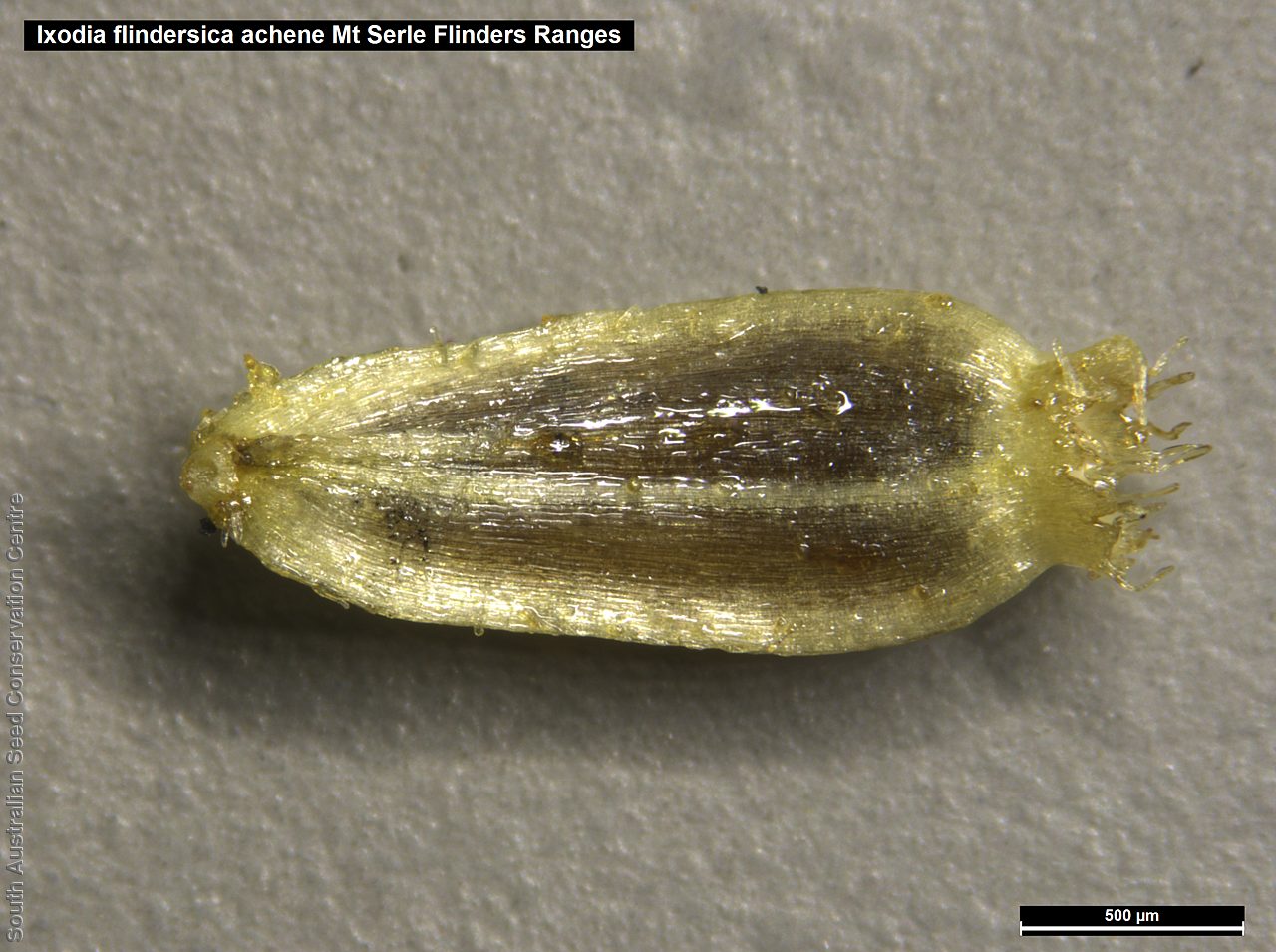
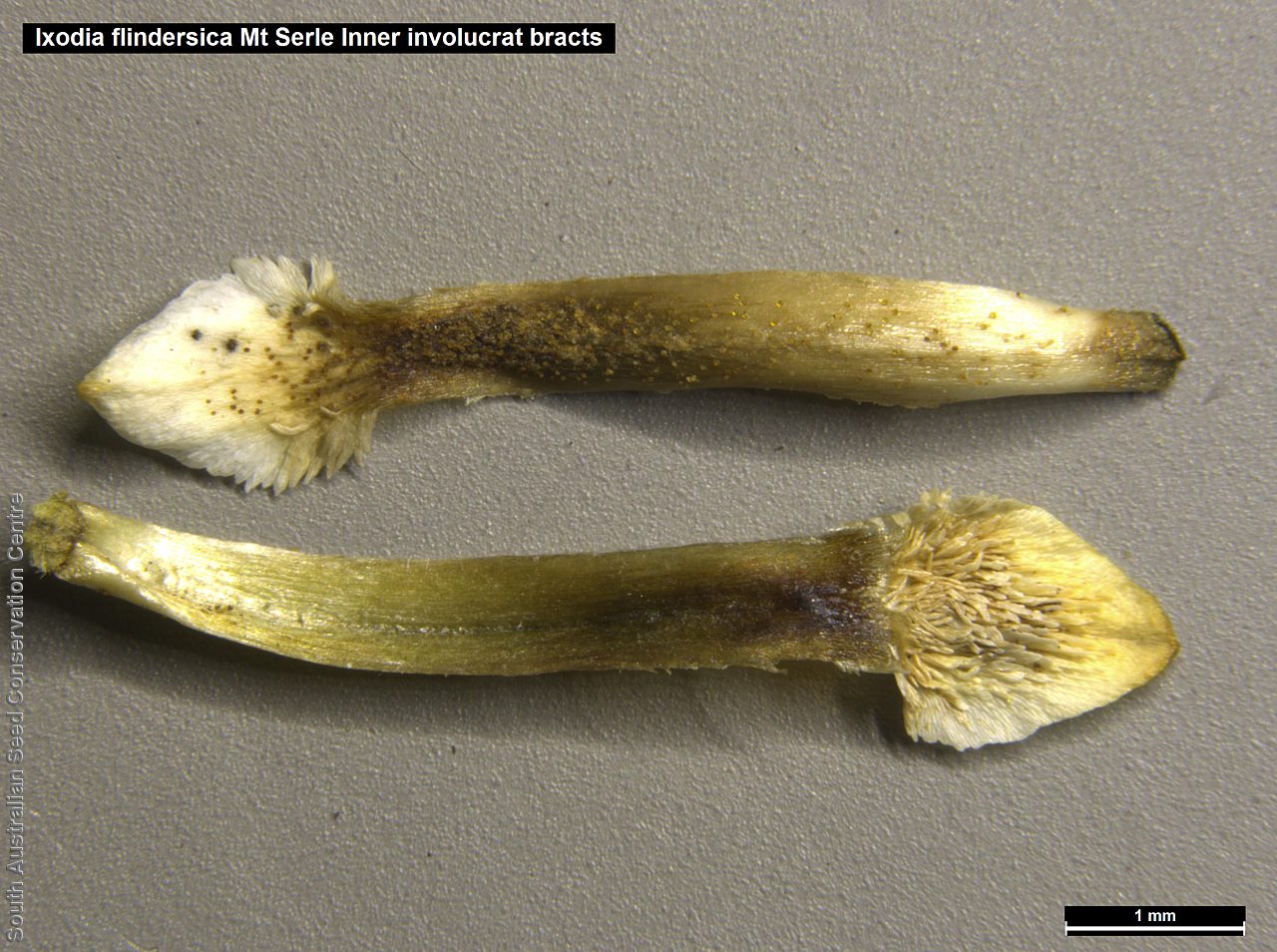
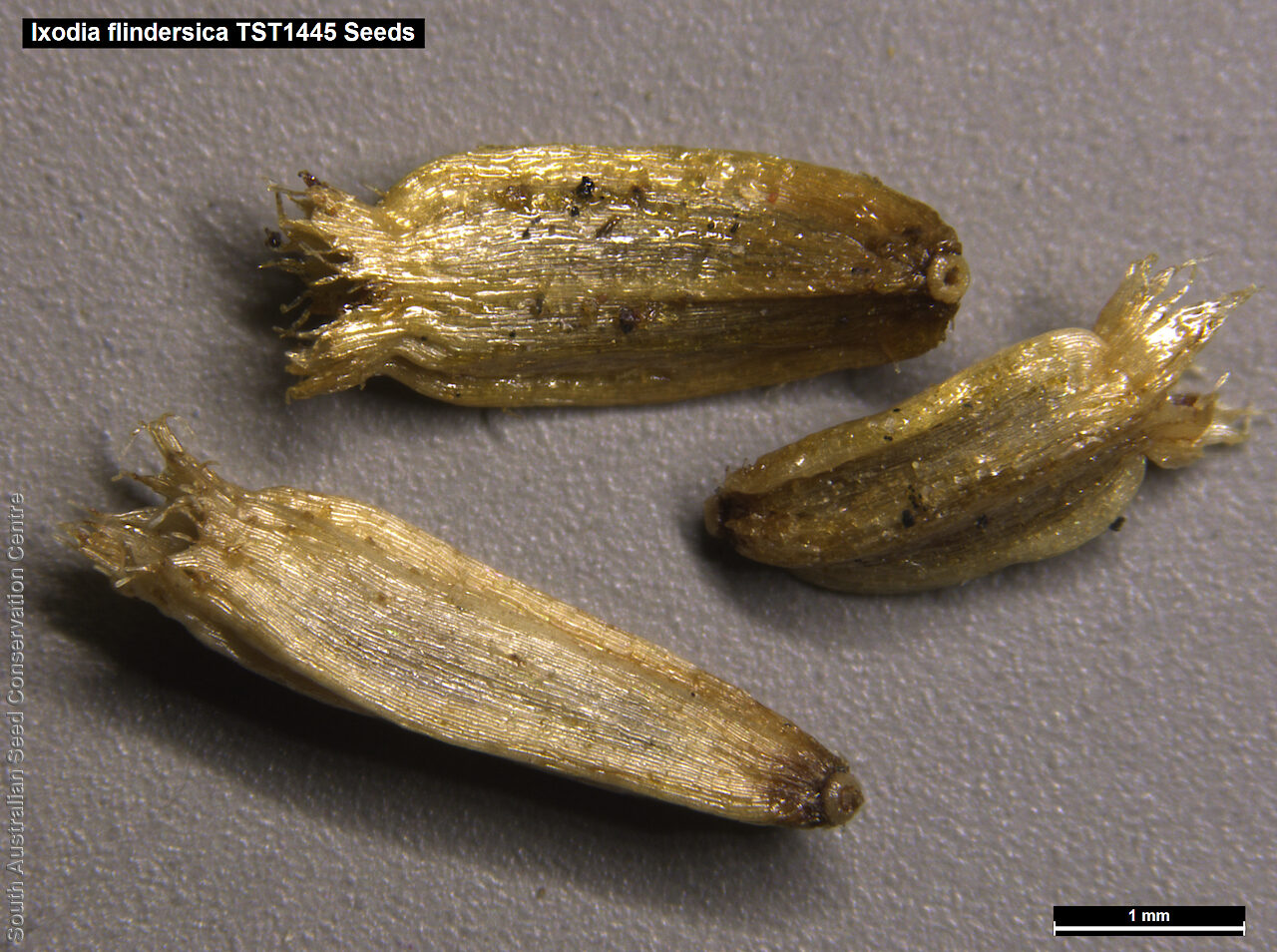

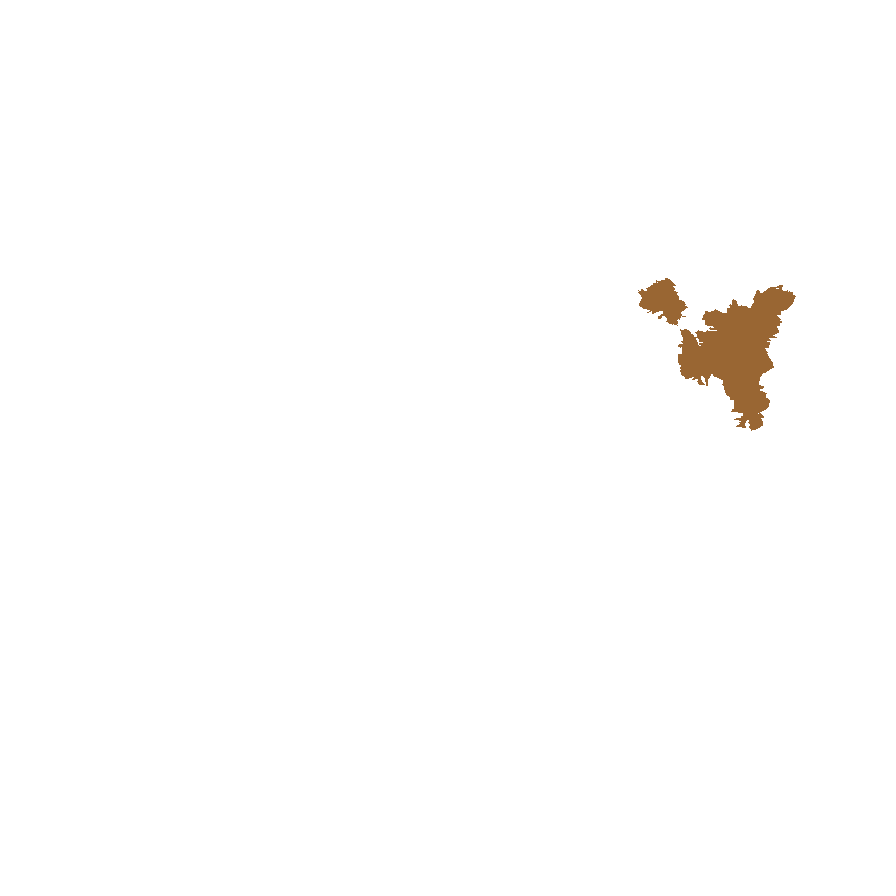
Botanical art
Etymology
Ixodia, from the Greek 'ixodes', meaning sticky (from the Greek 'ixos' meaning birdlime); referring to the plant being sticky. Flindersica named after the Flinders Ranges and refers to the restricted distribution of this species in the northern Flinders Ranges.
Distribution and status
Endemic to South Australia and found only in the northern Flinders Ranges and Gammon Ranges, growing in rock fissures on the high slopes of the sandstone peaks and ridges and in rocky creekbeds which flow out of the Gammons and Freeling Heights. Native. Rare in South Australia.
Herbarium region: Flinders Ranges
NRM region: South Australian Arid Lands
AVH map: SA distribution map (external link)
Plant description
Shrub to 40 cm high with ascending, glabrous stems. Leaves closely alternate on younger branches; absent from older branches; sessile, linear to narrowly-rhombic or elliptic, to 25 mm long and 4.0 mm wide; dark green and shiny above, pale below; viscid; apex acute; margins entire, flat. Inflorescence in clusters at tip of short stalk with white papery daisy flowers. Flowering between November and April. Fruits are brown papery head. Seed embryo type is spathulate.
Seed collection and propagation
Collect seeds between January and June. Collect whole heads that are drying off and turning greyish-brown or collect just the seeds by plucking off . Mature seeds are easily removed. Place the heads in a tray for a week to dry. Then pluck the seeds from the head with your finders. Viable seeds will be fat and brown. Store the seeds with a desiccant such as dried silica beads or dry rice, in an air tight container in a cool and dry place.
| Location | No. of seeds (weight grams) | Number of plants | Date collected | Collection number Collection location | Date stored | % Viability | Storage temperature |
|---|---|---|---|---|---|---|---|
| MSB | 6,000 (1.13 g) | 50+ | 17-Jun-2009 | KHB292 Flinders Ranges | 90% | ||
| BGA | 7,900 (2.44 g) | 15 | 8-Apr-2020 | TST1445 Flinders Ranges | 24-Jun-2020 | 95% | -18°C, -80°C |
| BGA | 5,715 (2.430 g) | 20 | 31-Jan-2023 | DJD4177 Flinders Ranges | 20-Jun-2023 | 100% | -18°C |
Number of plants: This is the number of plants from which the seeds were collected.
Collection location: The Herbarium of South Australia's region name.
% Viability: Percentage of filled healthy seeds determined by a cut test or x-ray.